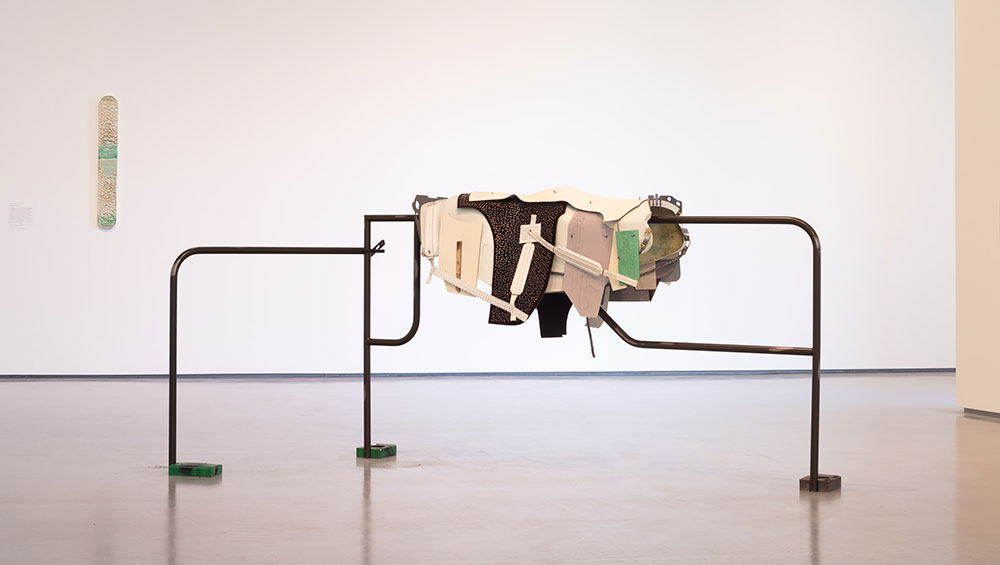
Magali Reus, Harlequin Darts, 2016. Acquired through a partnership between the Contemporary Art Society, Henry Moore Foundation and Cathy Wills, 2019. Photo: Lewis Ronald (Plastiques).
The Hepworth Wakefield, Wakefield
Postponed
by BETH WILLIAMSON
At the end of 2020, I was looking forward to this exhibition at the Hepworth Wakefield, but Covid restrictions meant it was not to be. I am told that Vision & Reality is all in place, art works hung on walls and positioned on plinths, but, sadly, still without visitors – a shadow of an exhibition. I was therefore delighted to discover a great deal of material online, enabling one to delve in to this rich 100 years of contemporary art in Wakefield, albeit not in person.
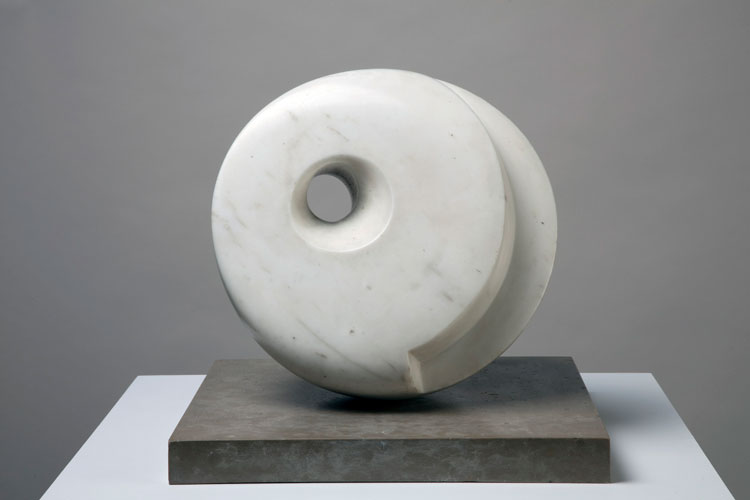
Barbara Hepworth, Pierced Hemisphere I, 1937. Marble, 35 x 38 x 38 cm. Presented by Mr HR Hepworth Esq., 1940 © Bowness. Photo: Jerry Hardman-Jones.
Wakefield’s art collection was established in 1923. The original purpose of the collection was to foster an understanding of contemporary art and its connections to modern life, ideals still upheld by the Hepworth Wakefield today. The gallery celebrates its 10th birthday this year, so it is apposite to mark its place in the century-long history of contemporary art in Wakefield. The collection has benefited from some major gifts over the years. Since the 1930s, the Contemporary Art Society has gifted more than 150 works to the collection. In the 1940s the War Artists’ Advisory Committee made a major gift to Wakefield. Then the private collectors Tim Sayer and Annmarie Norton pledged their 400 strong collection to the Hepworth in 2016. This major donation includes works by Alexander Calder, Prunella Clough, Sonia Delaunay, Naum Gabo, David Hockney, Paul Nash, Gerhard Richter and Bridget Riley. Most recently, in 2020, the Yorkshire collectors Terence Bacon and John Oldham made a significant bequest of ceramics and paintings. It is especially good to see examples from these gifts feature in the exhibition.
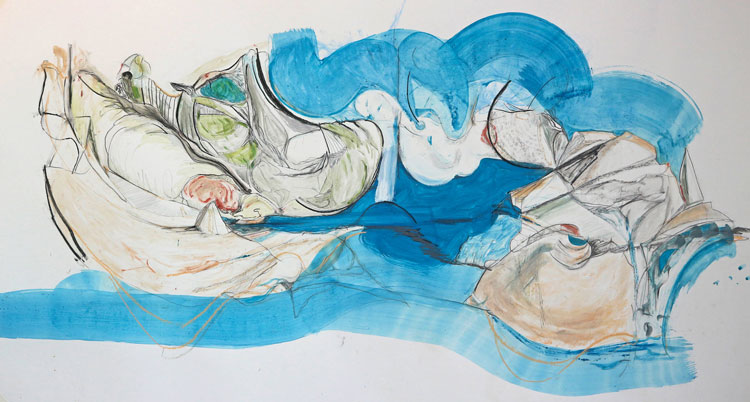
Rosanne Robertson, The Island, 2020. Charcoal, gouache and graphite. Acquired by The Hepworth Wakefield through the Contemporary Art Society’s Rapid Response Fund, 2020.
I appreciated the online offering associated with this exhibition because, rather than try to replace the exhibition, it complements it. There is a small collection of images of individual works, an online preview of the exhibition, a curator’s diary and a timeline. There are also links to related material on the Bacon and Oldham bequest, the Tim Sayer bequest, the acquisition of new work by Rosanne Robertson, a curator’s feature on Wakefield’s ceramics, collection highlights and a question and answer slot with the ceramicist John Ward. Together, these resources provide a depth of material that would not be possible in the exhibition itself. Curator Abi Shapiro’s account of Helen Kapp, the visionary director of Wakefield Art Gallery from 1951 to 1961, is particularly engaging.
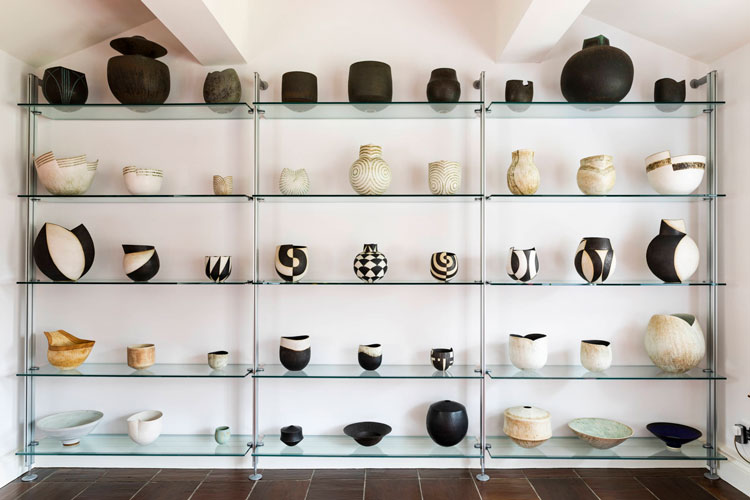
John Oldham and Terence Bacon’s collection of vessels by John Ward. Photo: Nick Singleton.
Shapiro’s text is accompanied by photographs, images of exhibition catalogues of the period, newspaper clippings and correspondence with artists (David Hockney and LS Lowry feature here). Kapp curated a number of landmark exhibitions, including Vision and Reality in 1956, which showed contemporary British art and from which this exhibition takes its name. Three years later, in 1959, Kapp arranged the exhibition Living Today, for which eight architects where invited to redecorate the spaces of the gallery as domestic interiors. The installation shot online shows a sitting room complete with sofa, sideboard, contemporary lighting, fabrics and table-top sculpture and ceramics. It shows how contemporary art and modern life truly came together. This really is a wonderfully evocative text that reveals the importance of Kapp’s directorship for an emphasis on education, access to art and supporting contemporary artists, all things that remain central to the Hepworth Wakefield’s mission and the collection it is helping to grow.
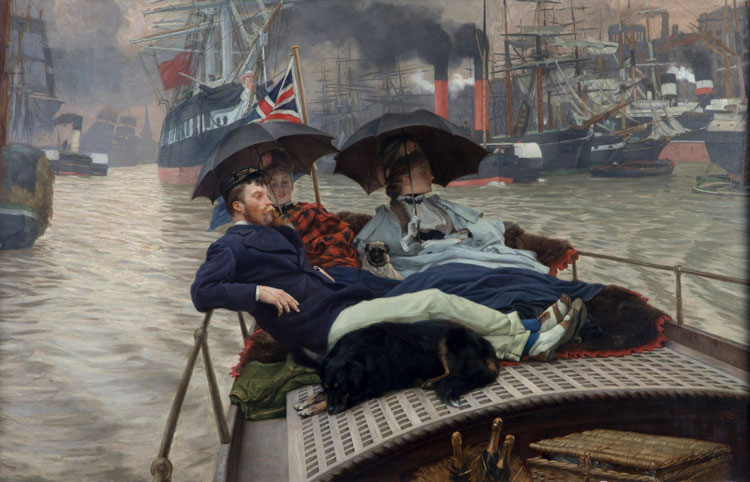
James Tissot, On the Thames (or How Happy I Could Be with Either) c1876. Oil on canvas, 74.8 x 118 cm. Purchased 1938. Photo: Jerry Hardman-Jones.
The exhibition itself falls into four sections. It opens with historic works of art from the inception of the collection in 1923 through to the 1960s. Artists include Agnolo Bronzino, Rosa Bonheur, Giulio Romano, James Tissot and John Atkinson Grimshaw. The focus is on the artworks themselves, but also on those figures and organisations that have been key in developing the art collection in Wakefield as one of contemporary art. The Wakefield Art Gallery’s founding director, Ernest Musgrave, was responsible for the acquisition of works by artists such as Barbara Hepworth, Henry Moore, Duncan Grant and John Piper. When Kapp became director in 1951, works of modern British art by Reg Butler, Alan David, Keith Vaughan and Patrick Heron broadened the collection.
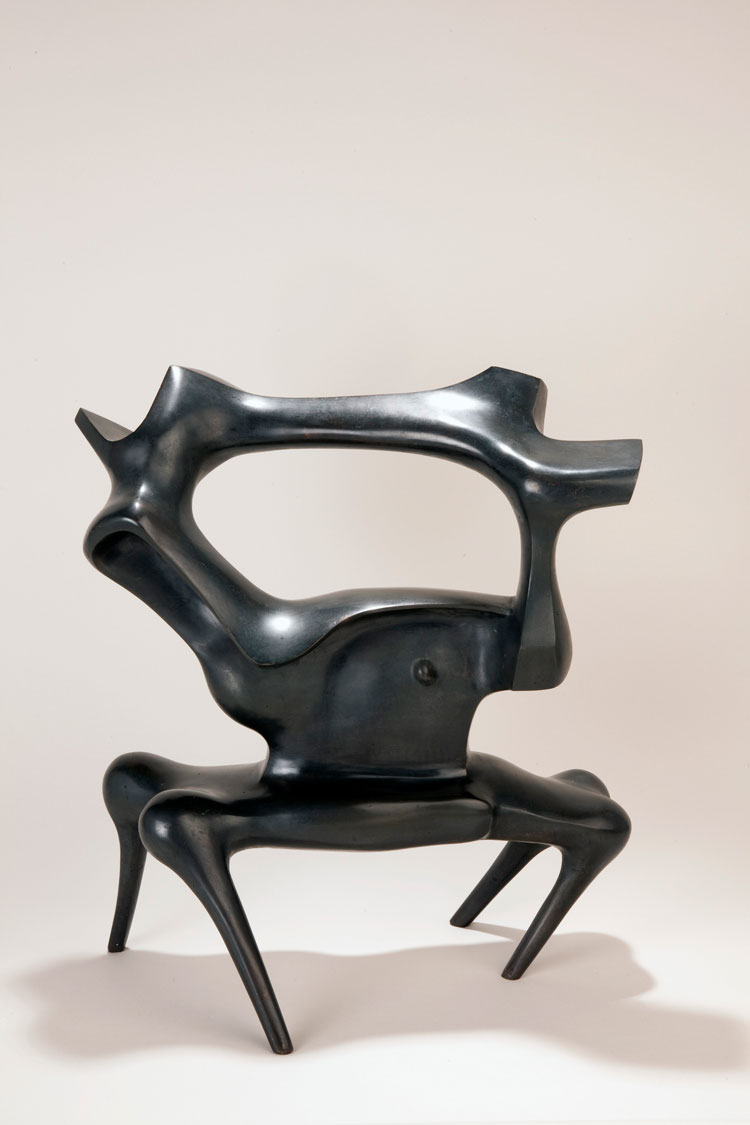
Bernard Meadows, Crab, 1953. Bronze, 46 x 40 x 25 cm. Donated by Eric and Jean Cass through the Contemporary Art Society, 2012. © The Estate of Bernard Meadows. Photo: Jerry Hardman-Jones.
The second part of the exhibition features an extensive timeline, also available online, and exhibition catalogues from across the entire period. The online timeline is a simple-to-use, click-and-drag affair full of interesting information that puts the collection in context. Recent highlights include the inaugural Hepworth Prize for Sculpture, awarded to Helen Marten in 2016, and the Hepworth Wakefield winning Art Fund Museum of the Year in 2017.
The role of education is the focus of the third part of the exhibition. It looks at the importance placed historically on children being able to access art through first-hand experience. More recent projects are represented in the photographs by Jamie Hawkesworth, who was asked to photograph local children dressed in designer clothing. A further focus is on the revival of the School Prints programme, a pedagogic aspect of the collection that is something I am personally keen to find out more about. The Educational Resource Service, a UK-wide scheme begun in the 1950s, managed in Wakefield by the West Riding School Museum Service, ensured face-to face experience of art for children. Now, the new School Prints project aims to get original artwork into every school in Wakefield district. A commendable project, it has commissioned six prints for 2021 by the artists Hurvin Anderson, Alvaro Barrington, Frank Bowling, Lubaina Himid, Claudette Johnson and Yinka Shonibare.
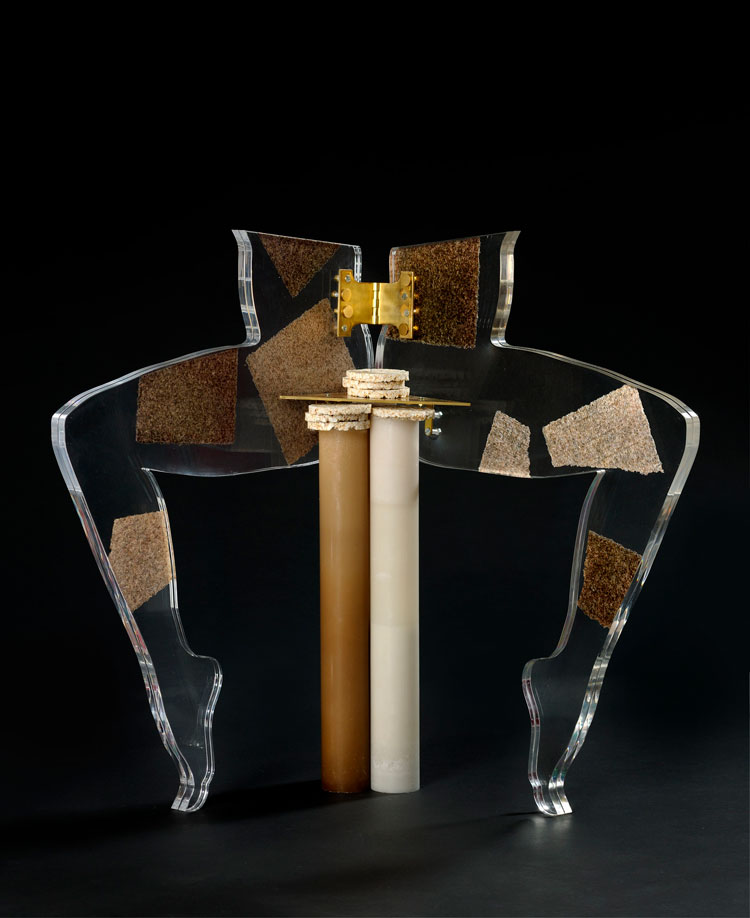
Anthea Hamilton, Leg Chair (SUSHI NORI), 2012. Acrylic, brass, plaster, wax, sushi nori, rice cakes. 91 x 92 x 46 cm. Presented by the Contemporary Art Society, 2015. © The artist. Photo: Doug Atfield.
The fourth and final section of the exhibition concerns new gifts and acquisitions to the collection, including last year’s Bacon and Oldham bequest and featuring 43 works by Ward. These monochrome vessels are displayed in a manner that evokes how they are shown in the collector’s home, a nod, perhaps, to the exhibition Living Today (1959) and the Wakefield collection’s own history. Works by Roger Hilton, Rachel Whiteread, Hockney and Terry Frost also feature, courtesy of another supporter and lender to the gallery. Other works include Anthea Hamilton’s Leg Chair (Sushi Nori) (2012) and Magali Reus’s Harlequin Darts (2016), two sculptures given to the collection through the Contemporary Art Society.
Over the last 100 years, Wakefield has developed a tremendous collection of more than 5,300 artworks, all supported by an ambitious programme of exhibitions and education, while keeping a close eye on its own founding principles. The online material tells that story well. I only hope this exhibition gets to open to the public and to do what all exhibitions are made to do – fascinate, educate and inspire. Goodness knows, we all need some inspiration right now.